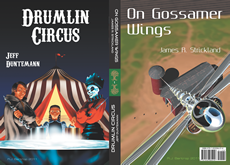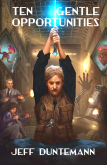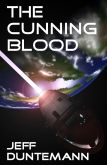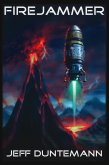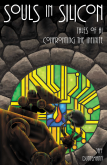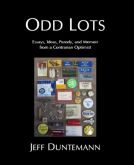- The Sun spat out an X5.8 flare last night, the strongest of this solar cycle so far. I went out in the back yard and looked northeast, and damned if I didn’t catch fleeting glimpses of faint flickering light. Was too faint to discern color, but if it was an aurora, seeing it from Phoenix must be some kind of record.
- If you don’t have a link to the NOAA Space Weather Prediction Center, bookmark it. I suspect that they’re going to have a lot to say during the solar maximum that’s now bearing down on us.
- I’m not expecting a Carrington-class event, but my longwire, by default, is switched to my engineered ground. I’m of two minds about listening to the low bands (or lack of low bands) while this storm is underway. 77 feet of wire is more than enough to develop enough voltage to spark with a strong enough coronal mass ejection. I don’t want to fry the front end of my IC-736.
- From the "That’s a Very Low Bar" Department: AIs can pretend to be stupider than they actually are. Forgive me if I say that they may be able to do it, but they’ll be BAD at it. Still, could AI’s "four-finger problem" be a joke on us? (By that I mean the tendency of AIs not to “know” how many fingers or toes a human being has.)
- Francis Turner’s opinions on LLM-style AI pretty much map to mine, and his Substack essay on the topic is a must read.
- I ran across an intriguing piece of music listening to KBAQ, our local classical station. It’s “Sky Blue After Rain” by Joseph Curiale, and consists of a piano and a Chinese erhu 2-stringed violin alternating with full orchestra. The piece is short (4:48) punchy, melodic, and when the orchestra picks it up, energetic. You can hear it on YouTube. Be sure to listen to the whole thing, even if the erhu grates on you. The orchestral part is worth it.
- Here’s a good short article explaining how cloud levels help regulate Earth’s temperatures.
- The highest observatory on Earth is now open for business, atop Cerro Chajnantor mountain in the Chilean Andes. The observatory was designed to capture infrared images with its boggling 6.5 meter (22 feet) clear aperture telescope.
- I have a robot dog with a 9mm gun in the (for now) dormant version of The Molten Flesh. What I didn’t imagine was a robot dog with a built-in flamethrower and laser targeting.
- While I was writing this entry, I had an idea: What if I unplug my antenna from the Icom and in its place on my antenna switch, put a coax plug with an NE2 neon bulb soldered across the connector. Well, it didn’t take but ten minutes (I’ve got plenty of neon bulbs and PL-259s) and the experiment is in place. Tonight when it gets dark I’m going to spend a little time out there in the garage, watching that NE-2.
Odd Lots
Daywander and Then Some
Hey, I’m still out here. Have been scarce lately since I’ve been putting all the energy I can spare into finishing The Everything Machine, my big drumlins novel. I’m at 108,000 words and just finished the first climax. There is another climax, a little wrapup, and then it’ll be done. I’m guessing 115,000 – 120,000 words or thereabouts, which is only a little longer than Dreamhealer, and certainly shorter than The Cunning Blood. Once it’s done I’m going to take a break and catch my creative breath before embarking on anything that ambitious again.
The Sun is getting feisty, and sometime last night emitted a Class X4.4 flare. I haven’t seen one that big in quite awhile. We’re heading for a (possibly early) sunspot peak, and Bob Zimmerman of Behind the Black lays out a chart of solar activity since 2008. Predictions of solar activity are fraught, as we really don’t know what the underlying mechanisms are. What I see in the chart is that predictions for Cycle 25 aren’t panning out. It won’t be a fizzle, as many said it would. It may not be a roar (like 1957-58) but the truth is we’re just going to have to wait and find out.
I’ve been on Facebook a lot less recently, mostly because it’s a bad use of my time compared to finishing a major novel. When I logged in yesterday, I found something truly bizarre: Some(one|thing) had tagged me not once but eight times, and for what? photos of mothers breastfeeding infants. Relatively modest ones, too. (The posts point to content on YouTube. I have not and will not follow those links.) It’s not porn, though I wouldn’t go so far as to claim a breastfeeding fetish is impossible. (No fetish is impossible.) The account names are all different, but all follow a similar pattern. Here’s the latest: “Funny Art 40306 OK” The pattern is two words, a 5-digit number, and “OK.” I’m pretty sure it’s a bot, though what it’s trying to accomplish is unclear.
This summer, Illinois will be ground zero for something rare and…peculiar: Two large broods of cicadas will emerge at the same time. Cicadas don’t bite, and the racket they make–hell, I grew up under the approach to the main runway at O’Hare Field. Cicadas got nuthin’ on Boeing 707s.
While an occasional dog will develop a taste for cicadas, their primary predator is the cicada killer wasp, Sphecius speciosus. The linked item explains how the wasps kill cicadas; I won’t summarize here because I just ate. But thereby hangs a tale:
Back in the two summers we lived in a suburb of Baltimore, we would see these big honking wasps doing search patterns up and down our driveway and across the lawn. I was new in the area and concerned that Mr. Byte & Chewy could get stung. I wasn’t about to catch one and look it up on google–wait a second, this was 1985. So having been raised on sitcoms like Green Acres, I did the obvious: I called the county agent. I described the wasps to the man, who replied in a bored sort of voice: "The wasps by your driveway are cicada killers–but don’t worry, they’re harmless." Carol had been worried about the dogs too, so I called her at the therapy office where she worked. She was with a patient, so I gave the good news to the receptionist. When Carol got home, she showed me the note that the receptionist took down in longhand over the phone: "The things by your driveway are psychotic killers, but don’t worry–they’re harmless."
And you wonder why texting is so damned popular!
More Classical Triumph
By popular demand, here come a few more triumphant and mostly triumphant (or at very least stirring) works of classical music, each one with a link to a recording on YouTube. I’ve considered all suggestions and rejected several for not having enough melody (Adams’ “A Short Ride on a Fast Machine”) or enough energy (Rimsky-Korsakov’s “Procession of the Nobles”) to carry off the feel of triumph. I like those too, but I’m on a mission here, and feeling sprightly tonight.
I’m about out of time for fooling with Contra today and want to post this before supper. I’m still looking for candidates and still considering a few, like Respighi’s “The Pines of Rome” and Aaron Copland’s “Outdoor Overture,” which is a touch peculiar but deserves way more play than it gets. Again, I’ll start collecting pieces for a third entry, though it won’t be soon, since I’m at 104,000 words and struggling to finish The Everything Machine. So let’s have at it!
- William Tell Overture: March of the Swiss Soldiers, by Rossini, 1829. Ok, guilty: I skipped this one the first time because who doesn’t know, well, The Lone Ranger theme song? Although nominally a march, it always sounded to me more like a mad scramble or (in most people’s minds) a guy on a galloping horse. The music world now agrees that the piece is indeed a “galop,” which was a rapid dance movement in the 1700s that became the forerunner of both the polka and …wait for it… the can-can.
- A Moorside Suite: March by Gustav Holst, 1928. The conclusion of a three-movement suite, all of which is worth hearing. This concluding march expresses both confidence and triumph right through its final bars, which don’t explode but instead say, “We won. Live with it!”
- The Running Set, by Ralph Vaughan Williams, 1933. Here we have, not a lead-up to an explosive ending, but an absolutely manic five minutes beginning to end that I often characterize as “an Irish jig on meth.” It is probably Vaughan Williams’ most obscure work, drawing on four folk dance tunes and cranking the meter up to 11. Here’s about as much description as I found on a quick scan. Ok, sure, no explosion at the end, just a single forward chord. But given what came before it, hey, that’s all that I require.
- March of the Trolls by Edvard Grieg, from his “Lyric Suite,” 1894. The orchestra tries to play a pretty melody, and here come those darn trolls, not marching but madly scrambling from rock to rock in their cave and making an awful racket. They go away, and the orchestra tries again. Can’t have that. Here come the trolls, back from whateverthehell trolls do, scrambling into their cave, double time. March? Trolls don’t just march. Moral: Don’t try to play pretty melodies near the trolls’ cave. They’ll win every time.
- Troika by Sergei Prokofiev, from “The Lt. Kije Suite,” 1934. It was a movie: The previous incarnation of Captain Tuttle is born, falls in love, marries the girl, and then goes for an invigorating sleigh ride! That’s the life—but make sure you stop there, because the next movement is a downer. Really, it’s ok; Lt. Kije (like Captain Tuttle) never actually existed.
- Hall of the Mountain King by Edvard Grieg, from his ”Peer Gynt Suite” (1876). Sure, how can we play “March of the Trolls” and then not go to the next mountain over and try to sell the Mountain King some solar panels? No, King Carbon lives above a coal mine and avoids the Sun. So you have to sneak out again, with the King’s bodyguard following along behind. You go faster, they go faster, and before you know it, it becomes (yes!) another mad scramble to jump over chasms and race down the mountain to the valley, where there are fewer grouchy kings (or trolls) and more pubs.
- Symphonie Fantastique 5: Dream of a Black Sabbath, by Hector Berlioz, 1830. Most people in the classical music universe consider this a musical depiction of an occult nightmare. It’s not. It’s something utterly different and better: a musical metaphor of good triumphing over evil. So it begins: the creepy crawlies skitter and gesture and finally join together in an infernal dance (1:18) The nightmare is underway, and the minor evils make themselves known, posturing to each other, some noticing a brief bit of a different force (2:27) that strikes fear in their hearts. At about 2:50, the Big Bad opens up its Eye in the tower and, with funereal bells in the background, looks down at its minions while the Deus Irae pronounces its rank as top of the evil heap. But at 4:52 something new and terrifying happens: The Army of Good arrives at the gate and makes its presence known with the rhythm of marching stallions. Sneaking around circa 6:35, evil starts to worry. That’s quite an army that Good has out there. Time to engage! Down the gates fall and in comes the army, trampling the minions and making its way up the Tower to confront the Bad Boss. Up the tower stairs the minions retreat, sneaking and hopping (8:20) and falling over the railings (6:12). None can truly face the forces of Good. At the top of the stairs, Good unleashes its power against the Big Bad. Big Bad responds (9:01) Good overpowers evil, the Deus Irae plays for the end of Big Bad, and the Tower crumbles to dust and rubble on top of the doomed minions. Good rides off triumphant. No matter how bad you think you are, don’t mess with those guys. Really. REALLY.
Heh. I’ve wanted to write that last item that for a long, long time!
Playlist: Classical Triumph
I like happy endings. If you’ve read any of my fiction, you know that I write them. Bummers are popular in literary fiction, and were when I got my liberal arts education fifty years ago. (This is why I don’t write literary fiction. That shoe just don’t fit.) But this applies to music as well as fiction. The three characteristics I look for in music are these: Melody, Harmony, and Energy. I’ve enjoyed an occasional sad song (like “The Parting Glass”) for various reasons, but if a sad song has none of those three characteristics, I won’t buy it—and if there’s a skip button, my index finger finds it at some significant fraction of c.
Energy is the one I get the most pushback about. Who doesn’t like a peaceful tinkling Mozart piano piece? Well, if I can’t hum it…me. I have always used music to rev me up and break me out of blocks in my thinking or especially my writing. Energy in music is a very big thing for me.
So in today’s entry I present a playlist of some classical pieces that carry a special grip on my imagination: the music of triumph. No gentle fade at the end. Uh-uh. I want a musical explosion that makes me want to stand up and cheer. Yes, I’m that kind of screwball. If you didn’t know that already, well, this playlist will make it abundantly clear.
All links are to performances on YouTube. There are many others available.
- Also Sprach Zarathustra (Thus Spoke Zoroaster), by Richard Strauss, 1896. This one has special significance for me, because it’s the unforgettable opening piece in 2001: A Space Odyssey, which may be my favorite film of all time—and the film I asked Carol out to see for our first date in 1969.
- Symphony #3, Organ, final movement, Maestoso, by Camille Saint-Saens, 1886. It was years after I saw the 1995 film Babe that I first heard this larger work from which the Babe theme borrowed. The thunderous organ sequences are like nothing else I’ve heard in classical music. It opens with an explosion, and ends with an even bigger explosion. What’s not to love?
- Building the Crate, by John Powell, from the Chicken Run soundtrack, 2000. I’ve mentioned this one before, and whereas it strikes some people as slightly goofy in spots, it’s definitely stirring. There’s a touch of klezmer in it, and for a few seconds a chorus (if that’s the word) of…kazoos. It’s all about the chickens triumphing, something one doesn’t generally associate with chickens. But triumph they do, with callbacks to films The Great Escape and The Flight of the Phoenix.
- Lincolnshire Posy 6: Lost Lady Found, by Percy Grainger, 1937. Short and to the point, and definitely gets across the triumph of finding a beloved person after a long and difficult search.
- The Planets: Jupiter, by Gustav Holst, 1917. If you’ve heard anything in this playlist, you’ve heard ol’ Jupe. Although subtitled ‘The Bringer of Jollity” (is that still a word?) its utterly explosive ending makes me consider it “The Bringer of Triumph.”
- Russian Sailors’ Dance, by Reinhold Gliere, 1927. Written as part of a ballet called The Red Poppy, it starts out low and slow, gathering speed and force as it goes, until it reaches a manic but completely satisfying explosion at the end.
- Towards a New Life, by Josef Suk, 1931. I never heard this until KBAQ played it a couple of years ago. It deserves way more than obscurity. A triumphant march for full orchestra, it has roots in Czech nationalism and lyrics in the Czech language for which there is no English translation. (The linked performance is instrumental only.) Some think the trumpet solo opening is too long; if you agree, skip the first 90 seconds.
- Symphony #9. The New World: Finale, by Antonin Dvorak, 1895. There are a few slow parts in this finale to Dvorak’s all-time best work, but they act to frame the explosive energy of the rest and make it stand out by contrast. That’s ok; sometimes we have pause for a bit to take a breath, in our lungs and sometimes in our lives. No matter; the explosion at the end makes the quiet parts worthwhile.
- Pictures at an Exhibition: The Great Gate of Kiev, finale, by Modest Mussorgsky, 1874. In spite of the countless times I’ve heard it, this piece continues to bring a tear to my eye, often as not. Especially when preceded by the creepy and subversively diabolical movement “Baba Yaga’s Hut,” (as here) to me it symbolizes humanity staring down Evil, kicking its ass across the galaxy twice, and then dropping it down the black hole at the galaxy’s core, where it belongs and will trouble us no more. Triumph you want? Triumph I’ll give you!
That’s all for now. Got any more? I’m always in the market for music like this.
Gabby the Image Generator
If you recall, last April I posted a couple of entries about my experiments with AI image generators. There were serious problems drawing hands, feet, and faces. The other day I got an email saying that the Gab social network had installed an AI image generator called Gabby that registered users could try for free. So I tried it.
I have two general test categories of images I would like an AI to generate: Pictures of a thingmaker from my drumlins stories like “Drumlin Boiler,” and pictures of a woman sitting in a magical basket flying over downtown Baltimore, from my still-unpublished novella, Volare! I tried them both, and will include the best images from my tests below.
The drumlin thingmaker is a relatively simple structure: a 2-meter-wide shallow bowl made of what looks like black granite, half-full of a silvery dust, with two waist-high pillars in front of it, one smooth, the other vertically ridged like a saguaro cactus. In the stories, people tap a total of 256 times on the tops of the pillars in any combination, and the machine will then build something in the bowl. There are 2256 different possible codes, in base 10 1.15 x 1077, which is in the vicinity of the number of atoms in the observable universe. The people marooned on the planet where the thingmakers were found learn to use them, and I have several stories about the alien machines and their products, which thingmaker users call “drumlins.” (I know a drumlin is a glacial landform. I’ve repurposed the word, as SF writers sometimes do.)
As with the other image generators, you begin with a statement of what should be in the image. For the woman in a basket, I used the following prompt:
- A barefoot woman in pajamas sitting in a magical wicker basket flying over downtown Baltimore at dawn.
The best image I got was this:

Impressive, compared to my earlier efforts. The woman is African-American, which doesn’t matter; after all, I didn’t specify the woman’s race and Baltimore is a mostly-black city. The basket is wicker. The city does look like Baltimore. (I used to live there in the mid-‘80s.) So far so good. However, on the one foot we can see, she has two big toes. And it took Carol only seconds to note that she has two left hands.
Alas, she isn’t flying but rather sitting on the edge of somebody’s roof. I did specify “flying.” So I give it a B-.
I did a lot better in some ways with the thingmaker. The prompt I used for the image shown below is this:
- A 2-meter wide shallow bowl in a forest clearing, made of polished black granite, half-full of silvery dust, with two polished black granite pillars behind it.
The best image for this test is below:

The bowl is actually pretty close to what I imagine a thingmaker bowl looks like. It should be a little shallower. The two black pillars behind it look like trees. Ok, I didn’t specify how tall the pillars should be. My bad. But the dust is simply missing. I guess I should be glad that it didn’t build me a picture of Oklahoma in the 1930s.
Before I ran out of my daily limit of generated images, I decided to start from scratch with the woman in a basket. In Volare! the basket is a wicker basket about 3 feet in diameter, half-full of weeds that my female lead Edy Gagliano had pulled from her garden. So I began with this prompt:
- A 36" wicker basket half-full of weeds.
How hard could it be? Well, Gabby handed me a wicker basket with plants in it. However, it wasn’t a basket of weeds but a flower arrangement. I tried twice with the same prompt, and got the same thing: live plants in a basket, at least one suitable for putting in your bay window. The weeds were described in the story as wilted dandelions recently yanked and probably wilted if not dead and gone brown. No luck.


In a way I can’t bitch: These are all pleasing images, and Gabby doesn’t have the same problem with plants that it does with hands and feet. And the woman’s hands and feet are mostly better than what I got with Dall-E last April. We’re making progress.
Now, I don’t intend to use an AI-generated image directly as a book cover. There are some weird and currently unsettled copyright issues involved with AI graphics, largely concerned with what content the AI is trained on. I’ve heard rumors that Amazon is yanking self-published books from the Kindle store if it looks like they have AI-generated graphics as covers. That’s an easy enough bullet to duck: I’ll do as I’ve always done and commission a cover from a real live artist. The AI images would be used to suggest to the artist how I imagine various elements of the cover.
This was fun, and if you know of any other AI image generators that you can use without paying for them, please share in the comments, with a sample if you’re so inclined.
Odd Lots
- Alas, we have lost my favorite country music star, Toby Keith, of stomach cancer, at 62. He had lots of hits, but may be most famous for “Should’ve Been a Cowboy,” the most-played country song of the 1990s. (And if you’ve never seen my filk “Should’ve Been a Jedi,” you can find it here.) Eternal rest grant unto him, O Lord, and let perpetual light shine upon him.
- Ever heard of Venus’ moon Zoozve? You say Venus doesn’t have any moons? Well…it’s complicated. And interesting. Not to mention funny as hell.
- Orkin (the bug people) posted a list of the top 50 US cities for bedbug infestations. My home town is #1. My current metro isn’t even on the list. I guess I chose wisely.
- February is National Grapefruit Month, and today is National Fettuccine Alfredo day. Alas, my birthday is National Mud Day—granting that when I was a kid, I played happily in the mud. How do I know such important things? Of course: There’s a website for it. Select a day, week, or month, and who knows what people will be celebrating?
- Well, it’s not exactly a flying car, but…it’ll do, it’ll do.
- Three million malware-infected smart toothbrushes were gathered into a botnet that tormented Swiss servers with DDOS attacks. Uggh. My toothbrush is smart enough to be dumb. And hey, it smells like Pepsodent. Can’t beat that!
- Trout gonads can cure baldness when injected into your head. So just eating the trout doesn’t work? Bummer. I’m out.
Trunk Archaeology, Part 2
As I mentioned in my entry for January 10th, I recently found a bunch of ancient fiction manuscripts from my high-school days, which (old guy that I am now at 71) were 1966-1971. In the same folders was a list of stories (written pre-Selectric) that appears to be in chronological order, with over forty stories listed. Some few of the later ones have dates on them. Most are undated. I know I wrote my first SF short story in the spring of 1967. Alas, a copy of that story was not present in the folders. Still, a lot of interesting material was there, including a significant number of stories that I had utterly forgotten.
In reading through them here and there over the past couple of weeks I realized that the ones I had forgotten were, for the most part, forgettable. I had no training whatsoever in fiction until I attended the Clarion workshop in the summer of 1973. As with a lot of other things, I learned to write fiction by imitating the stories of others.
This explains a feeling I had reading some of my ancient stuff: It sounds like the pulps of the 40s and 50s. Well, that’s because a great deal of what I was reading in that era were story collections full of stories written in the golden age of the pulps, from 1940 or so to the early-mid ‘60s. My local public library had several of Kingsley Amis’ Spectrum anthology series, and a few of Horace Gold’s Galaxy Reader series, which gathered stories originally published in Galaxy Science Fiction. Once I exhausted what the library had I bought a pile of other anthologies as 75c mass-market paperbacks, most of which have fallen apart and were dumped in the 50-odd years since I was in high school. Groff Conklin edited quite a few, of which I only have two left: Elsewhere and Elsewhen (1968) and Great Science Fiction By Scientists (1962). I miss some of the casualties, like the marvelous Science Fiction Oddities (1966) granting that if I still had them, these old eyes would require a serious magnifying glass to read them.
I never did anything with my high-school stories. The earliest story I have that saw print is “Whale Meat,” (written in February 1971; I was in college by then) which appeared in Starwind Magazine (Published by Ohio State University’s SF club) in the early ‘80s and most recently in my collection Cold Hands and Other Stories.
The first draft of ”Whale Meat” sounded peculiar and somehow oddly modern to me for a significant reason: I wrote it in present tense. Not because present tense was stylish in 1971. In truth, I don’t recall reading any fiction in present tense while I was in high school. Rather, I guessed that immortal witches who had been born in the 1300s would live their lives and think their thoughts in the literal now. “Whale Meat” passed through a couple of later drafts during my college years. At some point I decided, Nahhh, that’s too strange. Nobody’s going to like a story told all in present tense. I then rewrote it in conventional past tense. So much for SF writers predicting the future…of SF, at least.
An incomplete first draft titled “Prayers at the Plaster Virgin” came to hand, undated but as best I recall, 1974. I finished it sometime during the 1980s, and renamed it “Born Again, with Water.” You can find it in my collection Cold Hands and Other Stories. It’s as close as I ever came (or likely will ever come) to writing a horror story.
Everything else I wrote in the late 1960s and early 1970s remains unpublished, mostly for good reasons. The bulk of those reasons hover around my failure to create credible characters in high school. Keep in mind (especially if you’re young and haven’t read any of the pulps) that I was in good company: Most of the pulps were action/adventure or tech/science puzzle stories that didn’t really require fully fleshed-out characters to engage the reader. I was writing what I was reading, pretty much.
Clarion changed all that—which is the reason I sold my first stories into professional markets shortly after the Clarion Workshop.
Here and there I think I succeeded in telling a story…by accident. Among my high school stories is one called “The Strongest Spell,” which I remembered badly. It’s a battle of wills between science and witchcraft. In some peculiar post-apocalyptic future, humanity has divided itself into Scientists and Witches. A young boy scientist and a young witch-girl meet periodically at the border between their respective territories, and get into spell-casting contests. The boy has an invisibility technology skullcap. The girl imposes invisibility on herself with a spell. The boy has an antigravity belt that allows him to fly. The girl has a spell for that too. Year by year they grow up and it’s the same old stuff every year: the boy practicing bravado and the girl a quiet and subtle one-upmanship.
There’s something on the table: There are ancient starships in the Scientists’ camp—but the Scientists can’t make them work. The girl knows why, but she’s not talking.
When they’re sixteen the game changes. This time the girl leads off by casting a complicated and (to the scientist boy) inexplicable spell. She summons a Cthuloid monster, which the boy assumes is a weapon directed at himself. Except—the monster attacks the girl instead.
Brute force doesn’t work. The boy attacks the monster with his gadgets and gets nowhere. The creature has dozens of eyes. The boy gets in the monster’s face and forces it to make eye contact. No technology, no science, no muscle: When the monster meets the boy’s furious eyes, it caves, releases the girl from its tentacles, and vanishes.
The boy doesn’t really understand: He was showing off the power of his technology, but she was testing him. She could match him, gadget for spell. But what she wanted to know was something different: Does he have the courage to face down a monster that cares nothing for his technology? Would he risk his life to rescue someone who had always been his rival?
He does. When he bends down to pick her up, assuming she’s injured and intending to carry her back to her own people, she tells him the Big Secret: That the starships need both science and magic to work. Her final spell wasn’t really about the monster. It was an invitation to work with her to make the starships operate, for Scientists and Witches both. He puts his arms around her, puzzled but pleased. You can almost see her thinking:
It worked.
Her spell was stronger than his: Cooperation beats competition. It wasn’t explicitly a love story, but one gets the impression that the girl added something a little extra to her spell.
None of my other stories in that era ever came close to this in terms of subtlety, and I assume that my success with “The Strongest Spell” was purely accidental. It was full of tropes and typos, and on the surface a little dumb. Hey, I was fourteen. Sometimes you just get lucky.
I still haven’t finished reading that quirky pile of yellowing paper. If other insights occur to me, you’ll see them here.
Trunk Archaeology
Sometime back I was digging around in one box or another in the shed and happened across something remarkable: two fat folders full of typewritten manuscripts I wrote while I was still in high school; that is, 1966-1970. It was a lot of paper: stacked up, the pile was over two inches thick. A handful were things I wrote in college from the very early ‘70s. Nearly all were high school stuff.
That box (and another box of more recent material) are what authors call their “trunk,” a sort of dead letter office for old manuscripts. I thought all that really old stuff was gone forever. I was sharp enough to write dates on the back pages of a few, which helped. Another clue lay in the nature of the typescript. I’ve owned three typewriters in my life:
- My grandmother Sade Duntemann’s 1920-vintage Underwood Standard #5, which she gave me in 1962, when I was ten.
- My Smith Corona electric, which my godmother Aunt Kathleen gave me for my birthday in mid-1968.
- My IBM Selectric, which I bought in 1972 and kept until laser printers made it unnecessary. I sold it in 2003.
The clues lay in the characters impressed by the type bars. The Underwood had seen a lot of use in its life, and its characters were not all crisply aligned. The type bars had clearly been jammed together now and then (I’d seen it happen, heh) and the characters were not in perfect alignment. The lowercase “a” in particular was a smidge higher than all the other letters. The Smith Corona’s type looked a great deal like the Underwood’s, except that I’d received it brand-new and all the type bars were perfectly aligned. The Selectric produced typescript obviously different from that of both earlier typewriters.
Another clue is that I wrote first drafts of all my high school stuff single-spaced.
The biggest clue of all was a stapled set of two sheets containing the titles of 46 short stories and one poem. As best I could tell, the titles were in chronological order. The list itself was typed on the Smith Corona, which dates it somewhere between mid-1968 and early 1972. The first draft of my story “Whale Meat” had the date February 8, 1971 written on the last sheet but was not on the list, so that means the list was drawn up earlier than that date.
Scanning the list of titles was profoundly weird. Although most of the titles were at least vaguely familiar (hey, how could I ever forget a title like “The Man Who Drove a Bulldozer Into Hell”?) about a third had slipped my memory utterly. Of the stories themselves I remembered almost nothing, save for a couple of my favorites. In reading manuscripts from that box, I didn’t even know what would happen next. It was like reading someone else’s stories entirely.
The list was not exhaustive. In digging through the paper-clipped sheet sets, I found two stories that had been written on the Underwood but were not on the list at all.
So here I am, reading through two inches of my fiction juvenalia. If you thought that finding the stories and the list of their titles was peculiar, stay tuned. I learned a lot about my progress as a writer from those stories. I’ll cite a few examples in my next entry here.
Niklaus Wirth 1934-2023
We lose our heroes one by one. By the time you’re in your 70s, like I am, you begin losing them a lot more frequently. We lost Don Lancaster back in July. Don’s books taught me how digital logic worked way back in the last half of the ‘70s. His writing was so good that I imitated it when I began to write computer articles and later books in the 1980s.
Niklaus Wirth died earlier today, in Switzerland, at 89. He was another hero, who taught me how to write computer programs that could be read. Pascal wasn’t the first programming language I ever learned; that honor (or perhaps dishonor) falls to APL and a little later, FORTH. I wrote a text formatter in mainframe APL in 1978. It was 600 lines of squiggly jibberish. By the time I got to the bottom, I had already forgotten how the top worked. FORTH, well, the less said, the better. I think of it as Yoda’s programming language. If you’ve ever messed with FORTH, you’ll know exactly what I mean.
My friend Mike Bentley introduced me to Pascal in 1980 or 1981. I bought a compiler for my CP/M machine soon after. Pascal/MT+ was awesome, so awesome I decided to write a book about it. I was about halfway through the book when Turbo Pascal popped up above the horizon. By the time I finished the book on Pascal/MT+, Turbo Pascal had taken over the Pascal universe, and I rewrote Pascal from Square One for Turbo Pascal. (The publisher retitled the book Complete Turbo Pascal for reasons I have never understood.)
I learned Pascal by cut’n’try. I learned how to write good Pascal by reading Wirth’s wonderful 1976 book Algorithms + Data Structures = Programs. My flameout with APL left me with the indelible conviction that software must be readable by the people who didn’t write it—and not after hundreds of hours of hair-tearing, either. I learned C, billed as a “high-level assembly language,” which is a contradiction in terms. My view: Go as high as you can go, or as low as you can go. To me, that meant Pascal (or BASIC, or COBOL) on the high end, and real assembly language on the low end. C source code is needlessly obscure, and by that I only mean it could be a lot more readable if its creators chose not to be proud of its obscurity. There’s actually a contest for writing the most unreadable C programs possible, which I think tells you a lot about C and its partisans. There was a time when C could do things that Pascal couldn’t. Those days are long, long past, and I will no longer argue the point here.
I learned Wirth’s Modula 2 programming language when products became available in the 1980s. I read up on Modula 3 (1988) and Oberon (1987) but never coded in them. As best I can tell, they expanded Pascal’s power without damaging its comprehensibility. Pascal itself has long been out of Wirth’s control, and today we have tremendously powerful implementations of Pascal like Delphi and Lazarus/FreePascal. But without Wirth, people like me would still be writing in BASIC or COBOL.
I write this eulogy without a heavy heart. Niklaus Wirth made it to 89, and reshaped much of the software development universe in the process. To me, that means he won—and won big.
Godspeed, sir. We will never forget you.
Odd Lots
- Happy New Year, gang! My prediction: 2024’s gonna to be a wild ride across the board. If popcorn weren’t so fattening I’d buy a pile of it.
- The Quadrantids meteor shower is tonight. The shower’s characteristic behavior is having a brief peak but an intense one. The predicted time of the peak is 7:53 AM EST, which would be 6:53 CST and 5:53 MST on 1/4/2024. That may sound awfully early to some of my night-owl readers, but Dash typically wakes us up by that time. I intend to be out watching for it, even though we have a first-quarter Moon—and it might rain. Hey, if you don’t play you can’t win.
- The JWST has begun showing us how many odd chunks of stuff are drifting around the galaxy without actually orbiting stars. Some of these rogue planets are in pairs, orbiting one another. Fascinating long-form piece on the phenom if astrophysics—or writing science fiction—is your thing.
- Here’s a dazzling video of a volcano erupting in Iceland. It’s unique because it shows the very beginning of the eruption, which almost resembles a sunrise. But then, boom! It gets spectacular!
- Sports Illustrated was buying articles generated by AI, with authors also invented by AI, right down to the author headshots. Futurism called them on it, and all questionable articles vanished. That doesn’t mean a few weren’t so ridiculous as to stand out and may still be there.
- Old timers like me will recall text user interfaces (TUIs) which, when we got started in computing, were what was on the menu. (It was a one-line menu.) Here’s a fun Substack piece about TUIs, and how in truth, modern GUI programming editors in IDEs don’t really give us much that we didn’t already have back then. Hell, when I was at Xerox in the early 80s somebody was passing around a Pac-Man game written in text mode for a 24X80 display.
- Alas, Bill Gladstone, who founded Waterside Productions, passed on to higher realms on 12/27. Waterside is the agency that represents my book-length nonfiction via agent Carole Jelen. We acquired a fair number of books through him during the Coriolis years. He knew what he was doing, and the world could use a few more agents with his savvy.
- New research suggests that red meat is not fatal. Body weight, not meat consumption, appears to cause the inflammation behind much cardiovascular disease. It’s carbs that put the weight on, as I’ve found over my past 25 years eating low-carb.
- Back before Christmas I was over at Total Wine buying vino to honor the Bambino, and was standing in the (long) line for the checkout beside a spinrack of hard liquor shooters. Most were things I’d heard of. But there…does that little bottle say it’s peanut butter and jelly sandwich whiskey? Yes, it did—so I bought one. Hey, 99c is cheap thrills. Carol and I tasted it when I got home. I expected to spit it out, but…it wasn’t half bad. From Skatterbrain, though Total Wine tells me it’s no longer available. Maybe the shooters were market research, and it flunked. So it goes. Alcohol is a volatile business…
- Cheap thrills? There’s a cheap ($10) red blend called Sheep Thrills, which was vinted in Italy but bottled here in the US. I bought some. Like PB&J whiskey, it wasn’t awful, but I still don’t recommend it. Too thin, too dry.
- I assumed that Skatterbrain’s PB&J whiskey had to be the weirdest whiskey in America. Silly boy. Have a look at this. Sorry, I’ll pass.
- If you’ve ever wondered what shallots were, well, here’s how to tell a shallot from an onion. I like the notion of shallots as heirloom onions (imaginary band name alert!) and Carol and I are going to try a few recipes that might tempt Tennyson’s Lady of Shallott. Ok, sure, it’s the Lady of Shalott. Maybe that’s the British spelling. Or Tennyson’s spellchecker wasn’t working. Yes, ok, I’ll shut up now.
